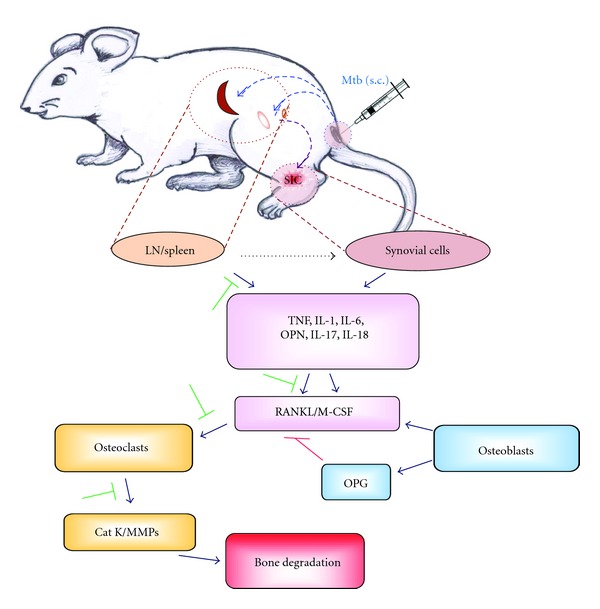Figure 2.

Arthritic bone damage and its modulation by herbal CAM. Adjuvant arthritis (AA) can be induced in Lewis rats by injection of heat-killed M. tuberculosis H37Ra (Mtb) at the base of the tail. The microbial antigens are then taken up by antigen-presenting cells (APCs) and then transported to the regional draining lymph nodes and spleen. APCs process antigens and then present them to antigen-specific T cells, which undergo activation and proliferation. These antigen-primed T cells then migrate into the target organ, the joints, and release proinflammatory cytokines locally leading to arthritic inflammation. These cytokines also stimulate the production of RANKL, which activates osteoclasts producing Cat K and MMPs resulting in bone damage (⊣: inhibition) (Cat K, Cathepsin K; IL, interleukin; LN, lymph node; M-CSF, macrophage colony-stimulating factor; MMPs, matrix metalloproteases; Mtb, M. tuberculosis H37Ra; OPN, osteopontin; OPG, osteoprotegerin; RANKL, receptor activator of NF-κB ligand; s.c., subcutaneous; TNF, tumor necrosis factor-α).
